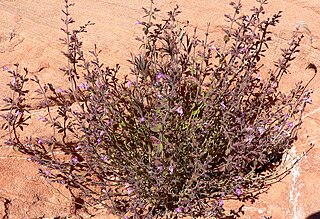| Joseph Edward Laferrière | |
|---|---|
| Born | 1955 |
| Nationality | American |
| Scientific career | |
| Fields | Botany |
| Author abbrev. (botany) | Laferr. |
Joseph Edward Laferrière (born 1955) [1] is an American botanist with a particular interest in ethnobotany.
He obtained his Ph.D. from the Department of Ecology and Evolutionary Biology at the University of Arizona in 1991 with a dissertation entitled "Optimal use of ethnobotanical resources by the Mountain Pima of Chihuahua, Mexico". [2] [3] Among other institutions, he has held professional positions at Washington State University, [4] Biosphere 2, [5] and the Universidad Autónoma del Estado de Morelos (in Cuernavaca, Mexico). [6]

The University of Arizona is a public research university in Tucson, Arizona. Founded in 1885, the UA was the first university in the Arizona Territory. As of 2017, the university enrolls 44,831 students in 19 separate colleges/schools, including the University of Arizona College of Medicine in Tucson and Phoenix and the James E. Rogers College of Law, and is affiliated with two academic medical centers. The University of Arizona is governed by the Arizona Board of Regents. The University of Arizona is one of the elected members of the Association of American Universities and is the only representative from the state of Arizona to this group.

Washington State University is a public research university in Pullman, Washington. Founded in 1890, WSU is a land-grant university with programs in a broad range of academic disciplines. With an undergraduate enrollment of 24,470 and a total enrollment of 29,686, it is the second largest institution of higher education in Washington state behind the University of Washington.

Biosphere 2 is an American Earth system science research facility located in Oracle, Arizona. It was originally constructed between 1987 and 1991, and has been owned by the University of Arizona since 2011. Its mission is to serve as a center for research, outreach, teaching, and lifelong learning about Earth, its living systems, and its place in the universe. It is a 3.14-acre (1.27-hectare) structure originally built to be an artificial, materially closed ecological system, or vivarium. It remains the largest closed system ever created.
He is the author or co-author of the botanical names of some 120 taxa, including Berberis pimana, Hymenocallis clivorum, Hymenocallis pimana, Laennecia pimana, Pectis pimana, Prionosciadium saraviki , and Yucca declinata . [7]
Berberis pimana is a species of the genus Berberis in the family Berberidaceae. It is native to a mountainous region of the Sierra Madre Occidental in the Mexican states of Chihuahua and Sonora.
Hymenocallis clivorum is a member of the genus Hymenocallis, of the plant family Amaryllidaceae. It is native to the southern part of the Mexican state of Sonora.

Hymenocallis pimana is a member of the genus Hymenocallis, in the family Amaryllidaceae. Common name in English is Pima spider-lily; in Spanish it is cebollín. It is endemic to a small mountainous region in the Sierra Madre Occidental, straddling the Mexican states of Chihuahua and Sonora. Many of the people of the region are of the indigenous group known as the Mountain Pima or Pima Bajo.





